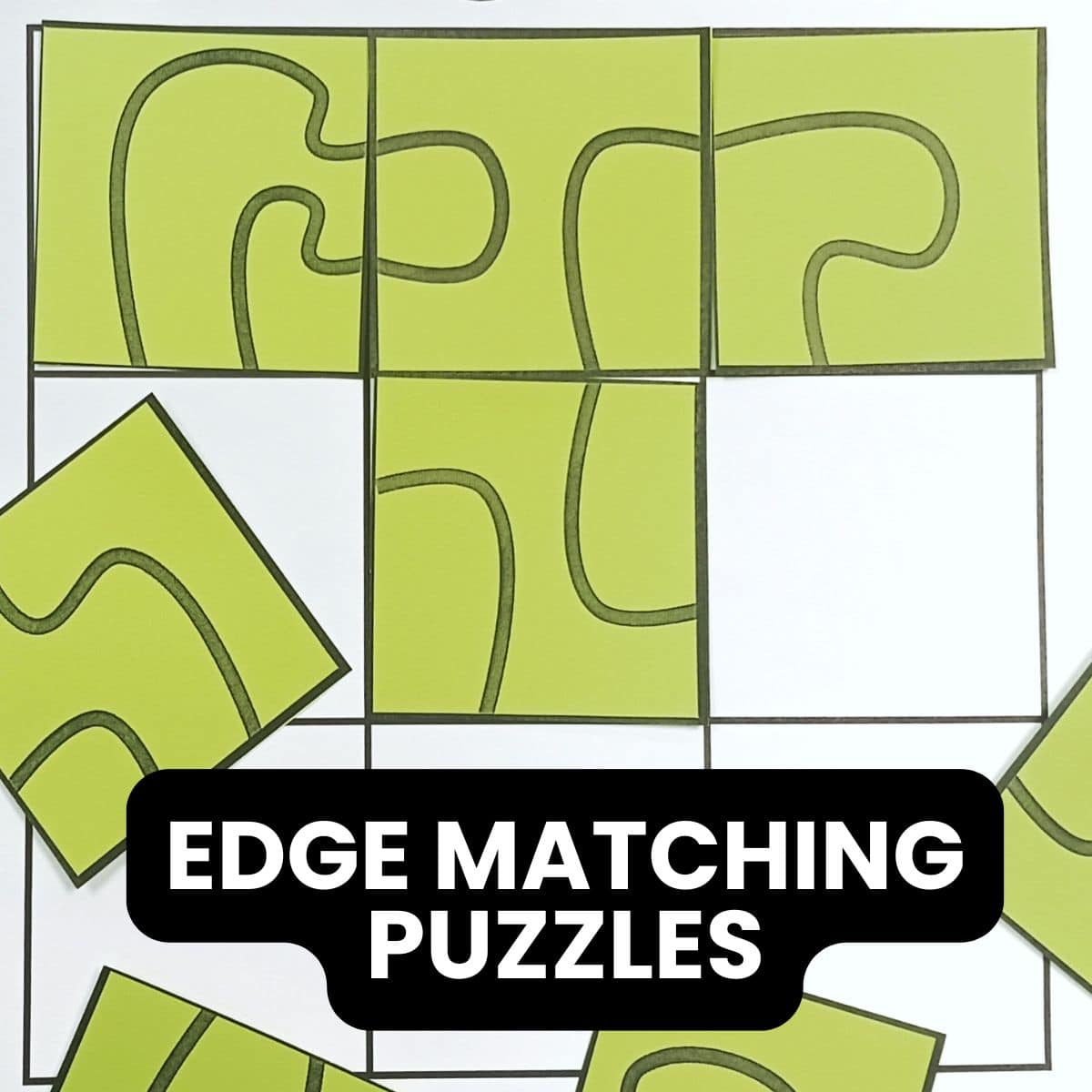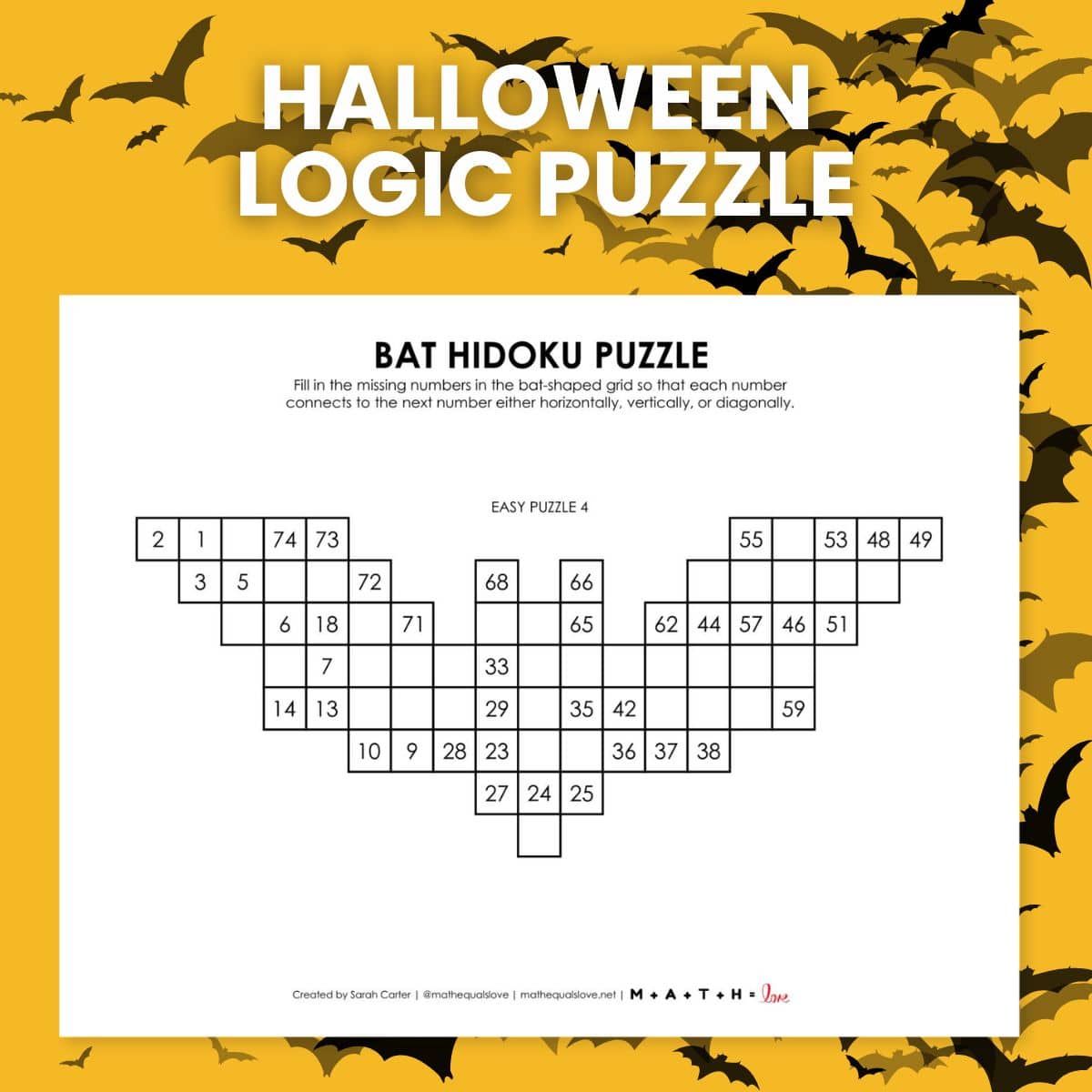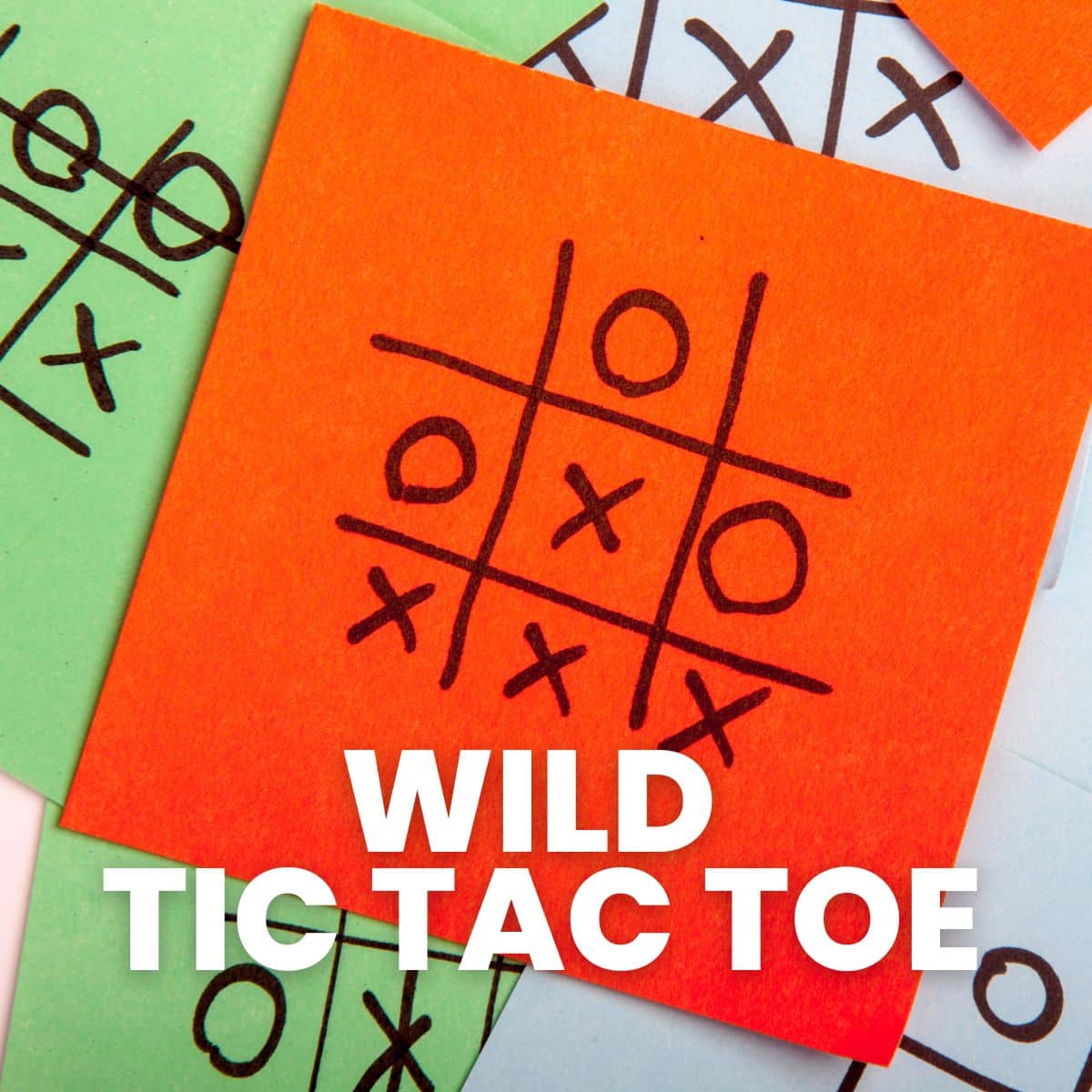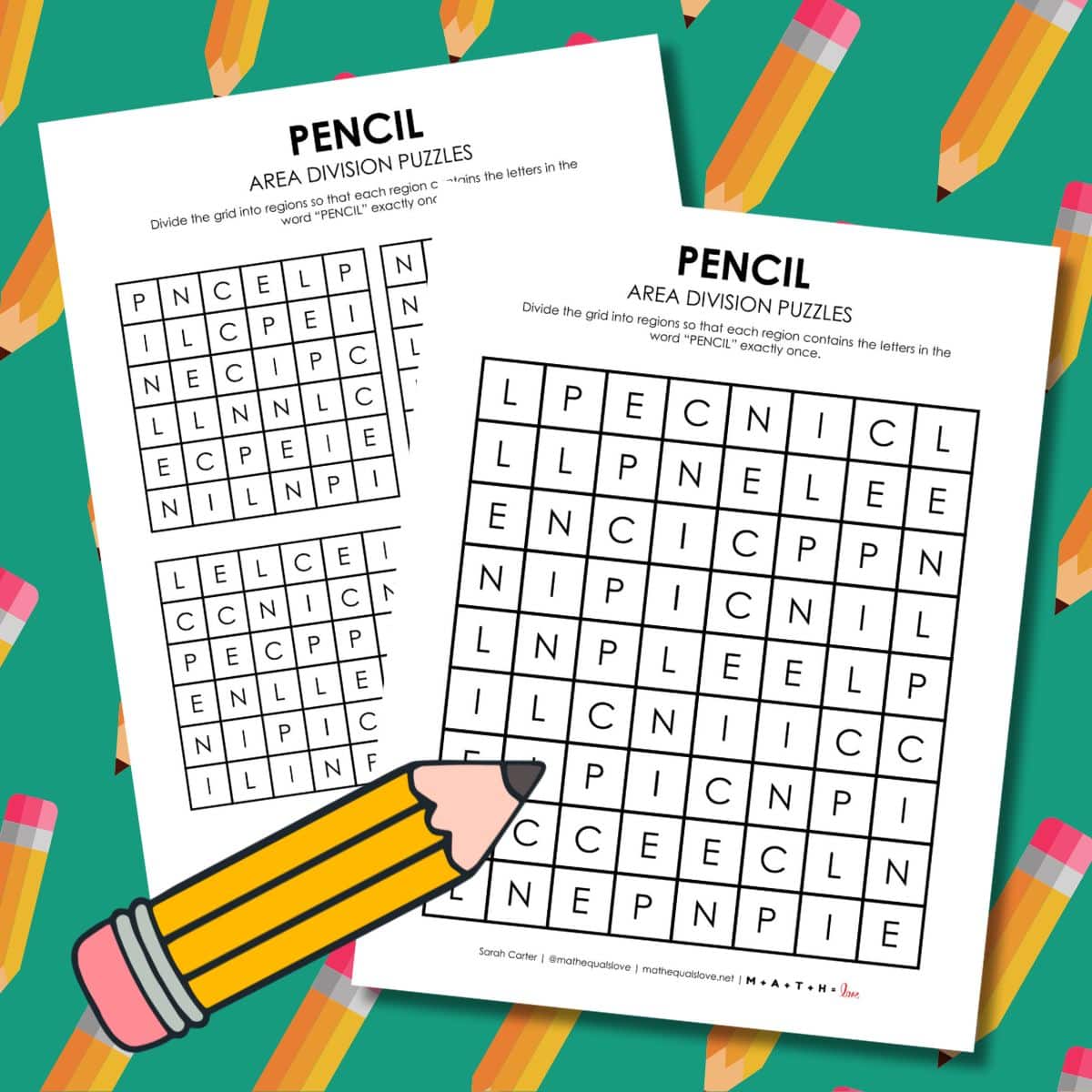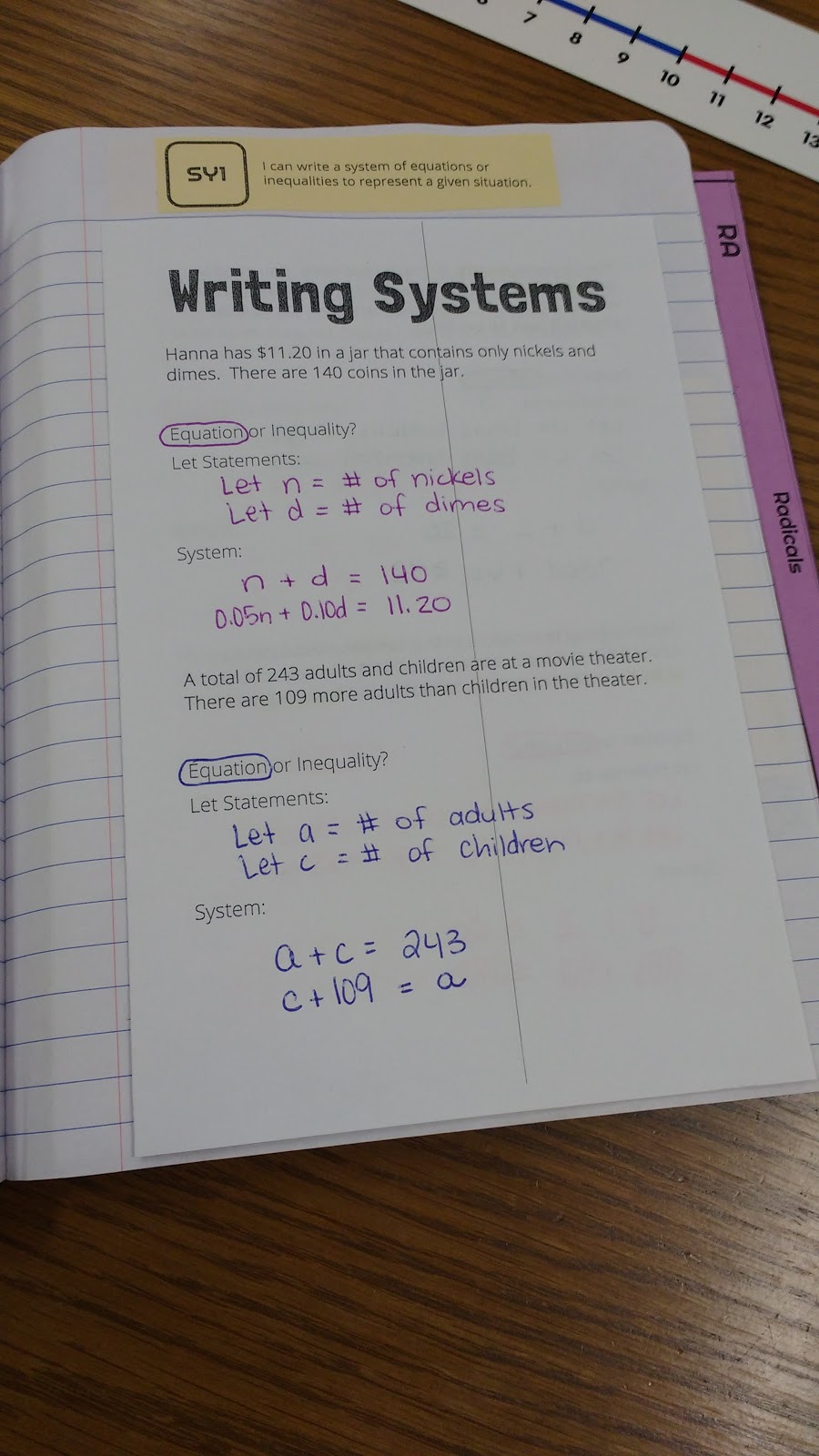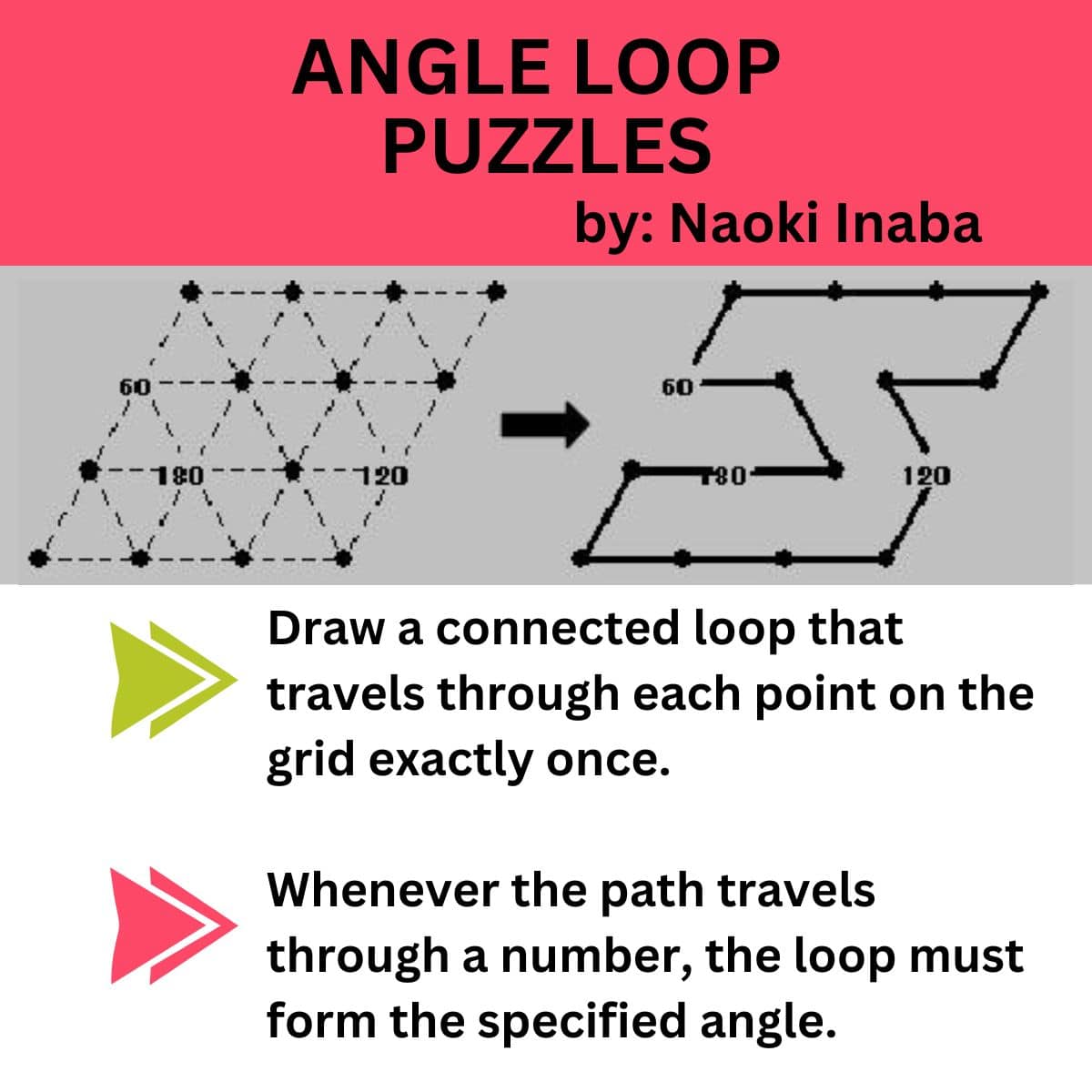Pinwheels for Peace 2019
One of the yearly activities I look forward to at my school is our annual Pinwheels for Peace celebration. Pinwheels for Peace is a school-wide, cross-curricular project that occurs every September. At my school, the project is headed up by by my super-talented, award-winning art teacher neighbor, Shelley Self.
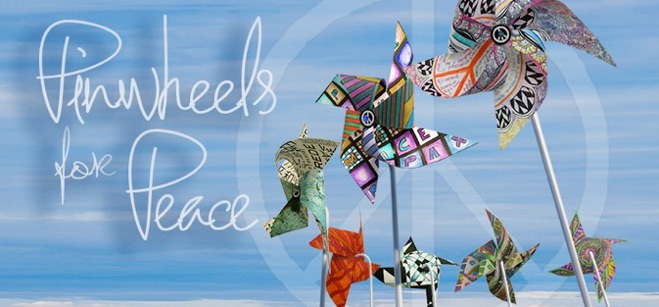
September 21st is International Day of Peace, and Pinwheels for Peace is a way for schools to acknowledge this day by having students create pinwheels. According to Shelley, “Pinwheels for Peace is a public art installation project created by art teachers in 2005 as a way for students to express their feelings about the events happening in the world and in their lives.”
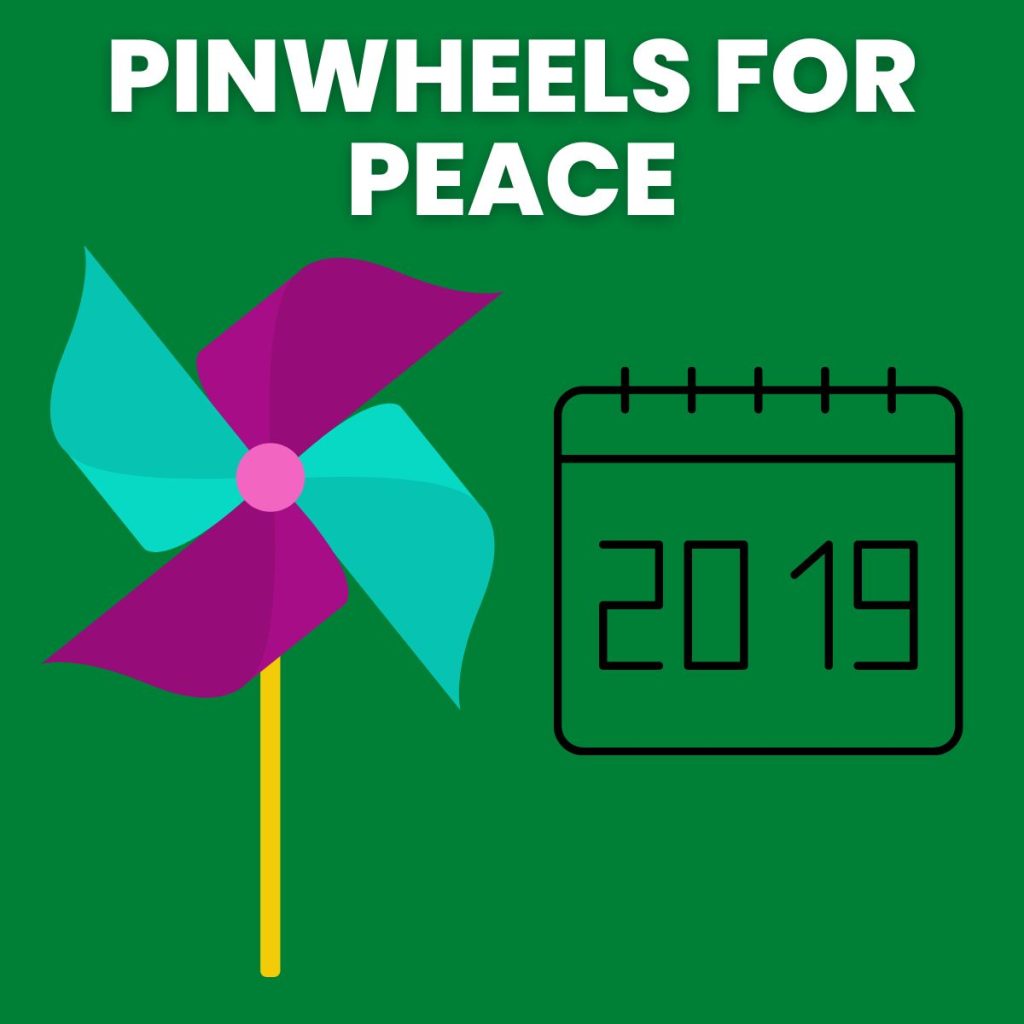
Teachers of all subjects are invited to join in the celebration by having their students build and decorate pinwheels which are assembled into a peace sign on the school’s front lawn as a community art installation. When I started teaching at my current school (which is actually the high school I graduated from) in 2018, it was mainly our school’s English, art, and special education classes that participated in the project. I decided to put a mathematical spin on the pinwheel design process, and I had my students design their own pinwheels in Desmos. I blogged about that process in 2018.

In 2019, I continued to participate in the project, and I enjoyed refining the project. In 2020, we ended up not participating in Pinwheels for Peace due to COVID-19. My fingers are crossed that we will be able to participate again this year!
I never actually blogged about our Pinwheels for Peace Project in 2019, so I decided I should remedy that today! 2019 was my school’s ninth year to participate in Pinwheels for Peace. I included a picture of the previous year’s art installation to show them why we were building pinwheels.
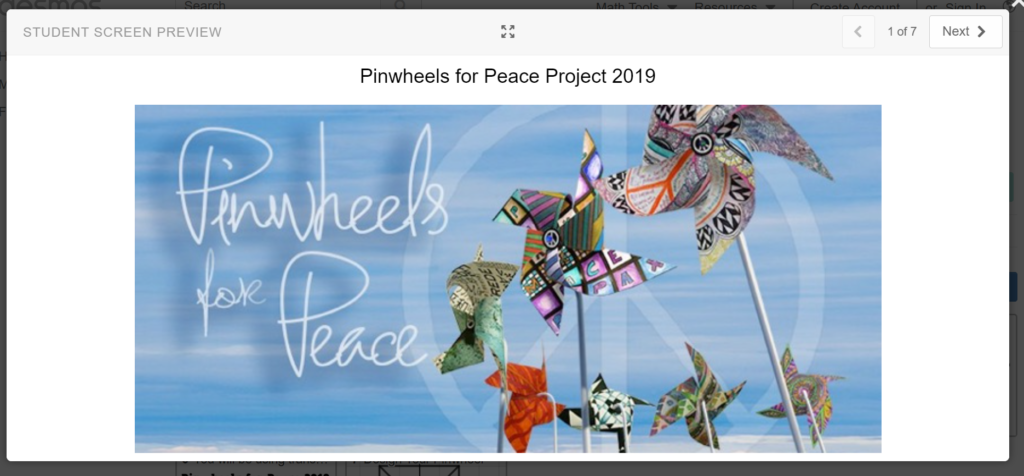
I created a simple Desmos activity to introduce my students to the pinwheel project and walk them through the process of designing their own pinwheel design using function transformations.
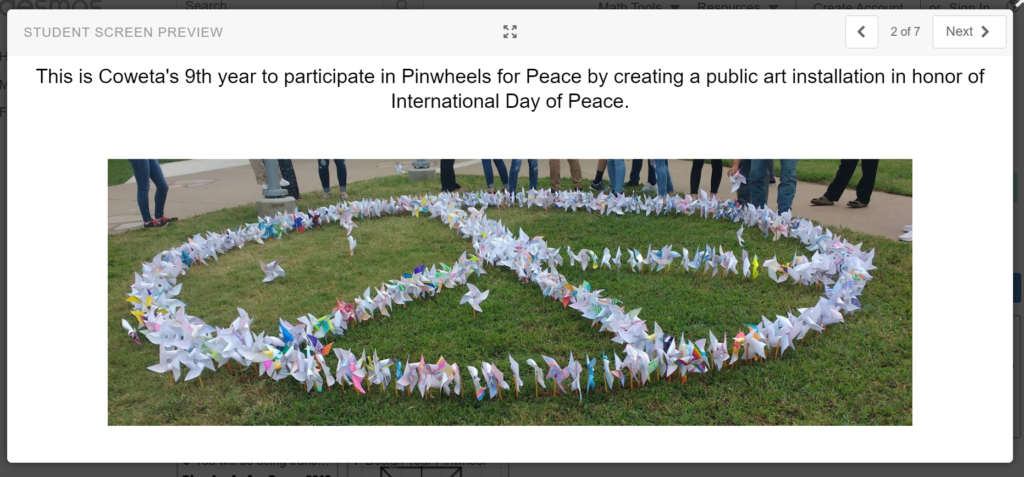
I also included a photo of some designs from the previous year to show them what sorts of designs were possible. In 2018, I let my students design their pinwheels using any parent function of their choosing. For 2019, I wanted students to focus more on translations, so I limited students to only three parent functions – absolute value, linear, and quadratic.
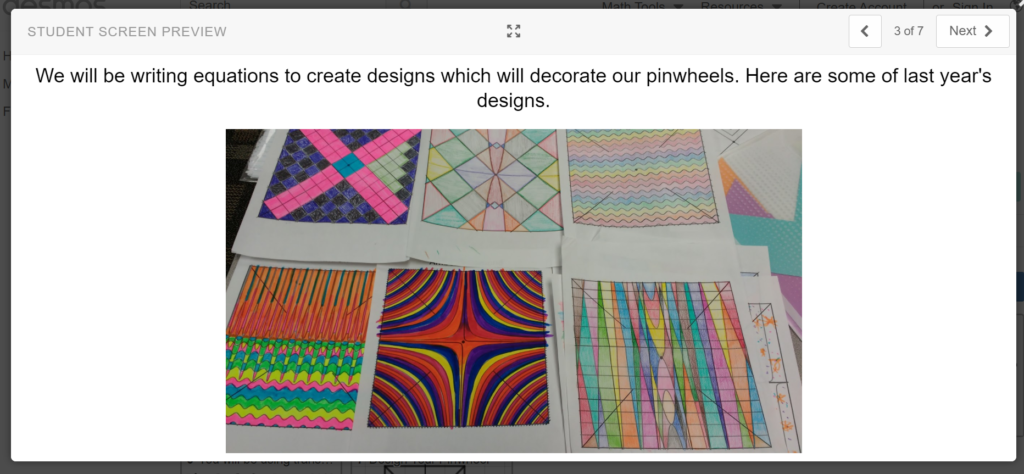
I also showed students what the finished pinwheels would look like.
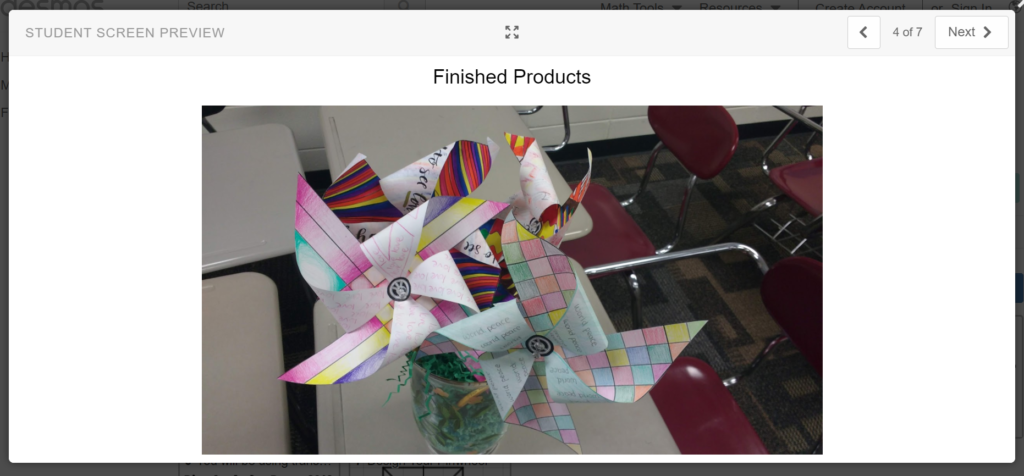
Then, I asked students, “What design will you create?”
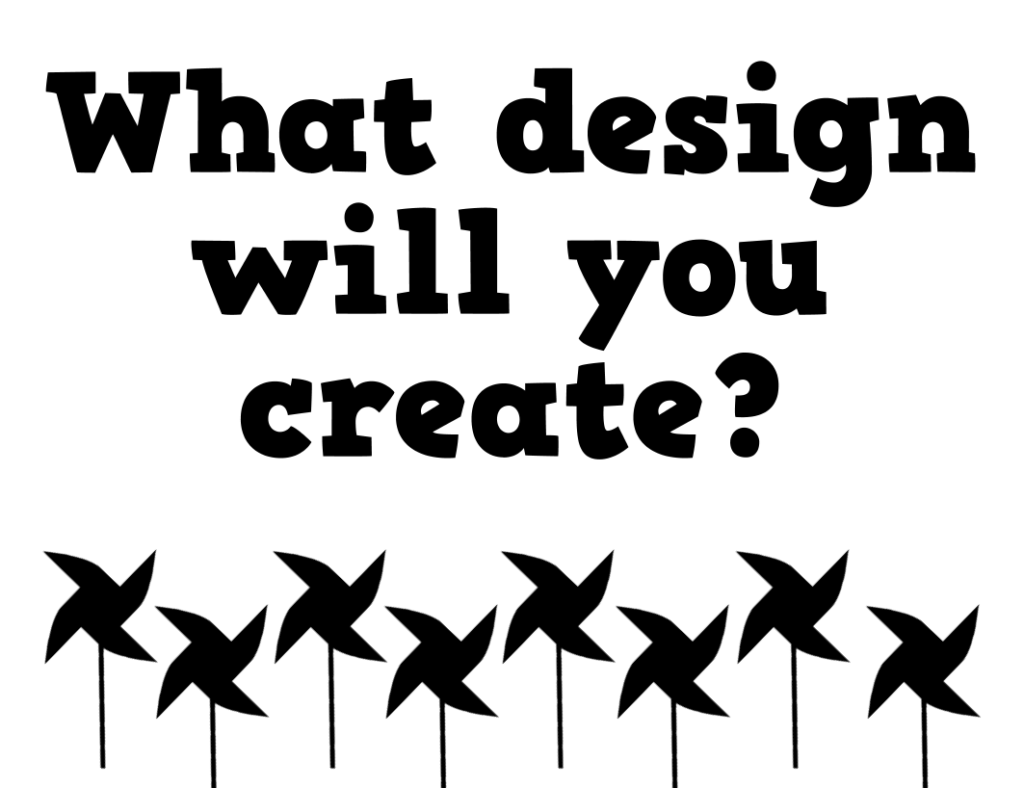
The Desmos Activity Builder was designed so that students would type in function transformations of these three functions to build their design. I included the graphs of the functions in the Activity Builder, and I gave each student a printed copy to reference as they were working on their pinwheel designs.
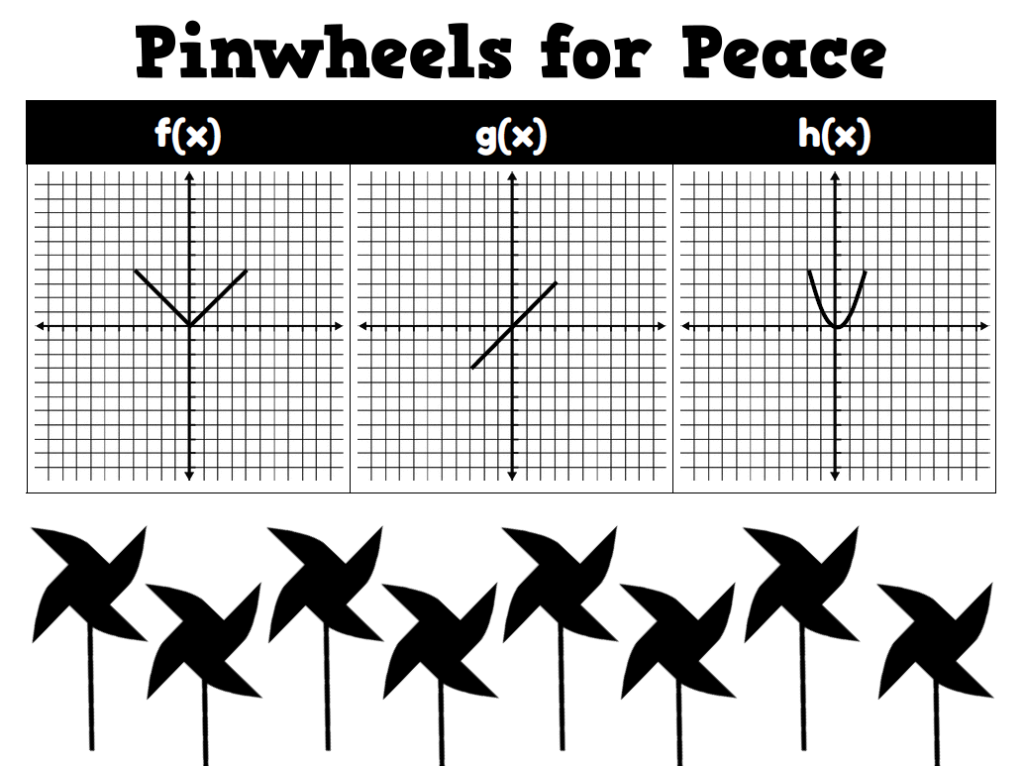
The last screen of the activity builder is where the magic happens. Students type in their transformations and watch their pinwheel design come to life.
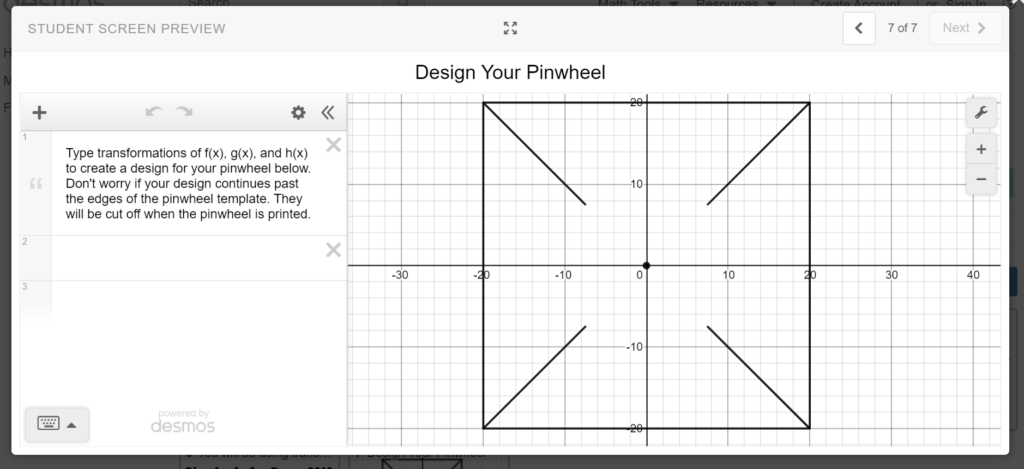
Here’s an example of what it looks like from a student’s point of view. This student chose to use transformations on f(x) which was an absolute value graph. What a lovely chevron pattern!
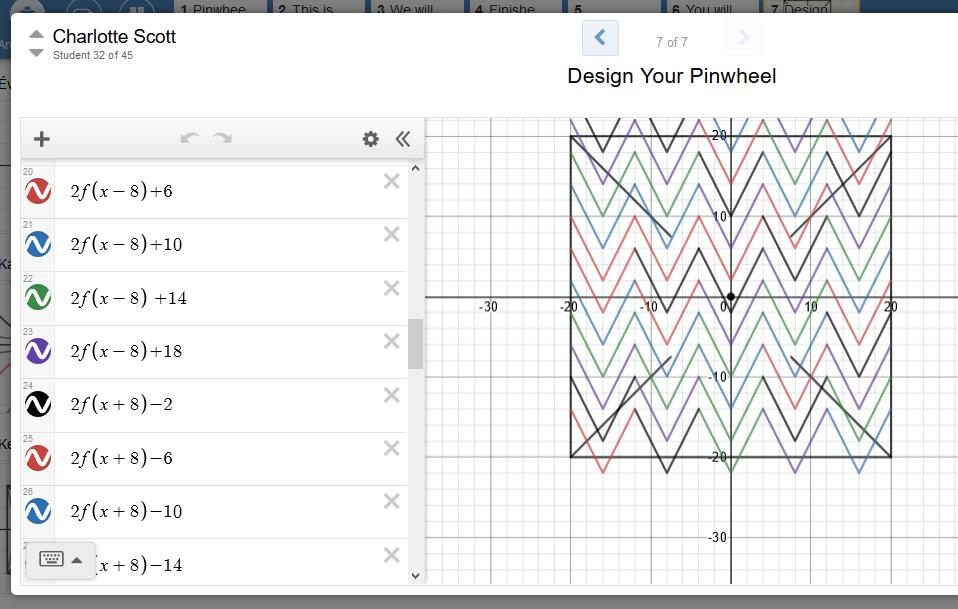
I loved being able to put students’ designs on the screen as the class was working on their pinwheels.
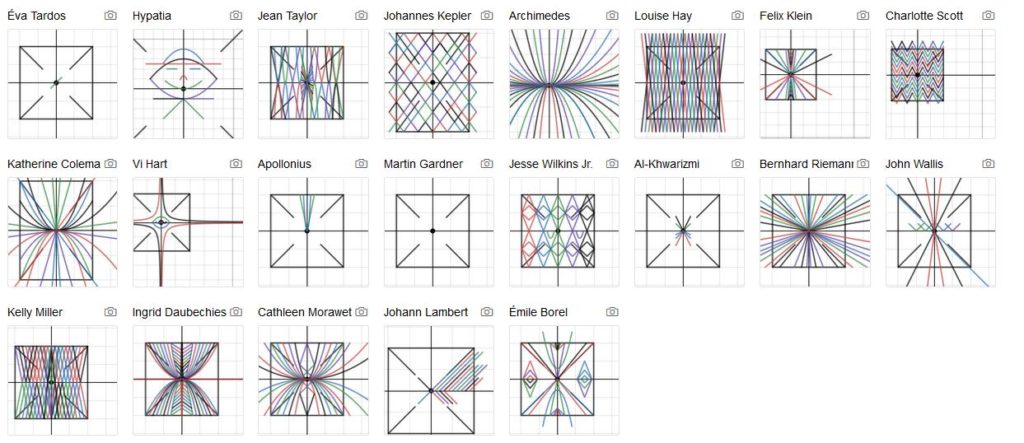
You could easily change this activity to focus on whatever type of transformations you are currently doing with your students!
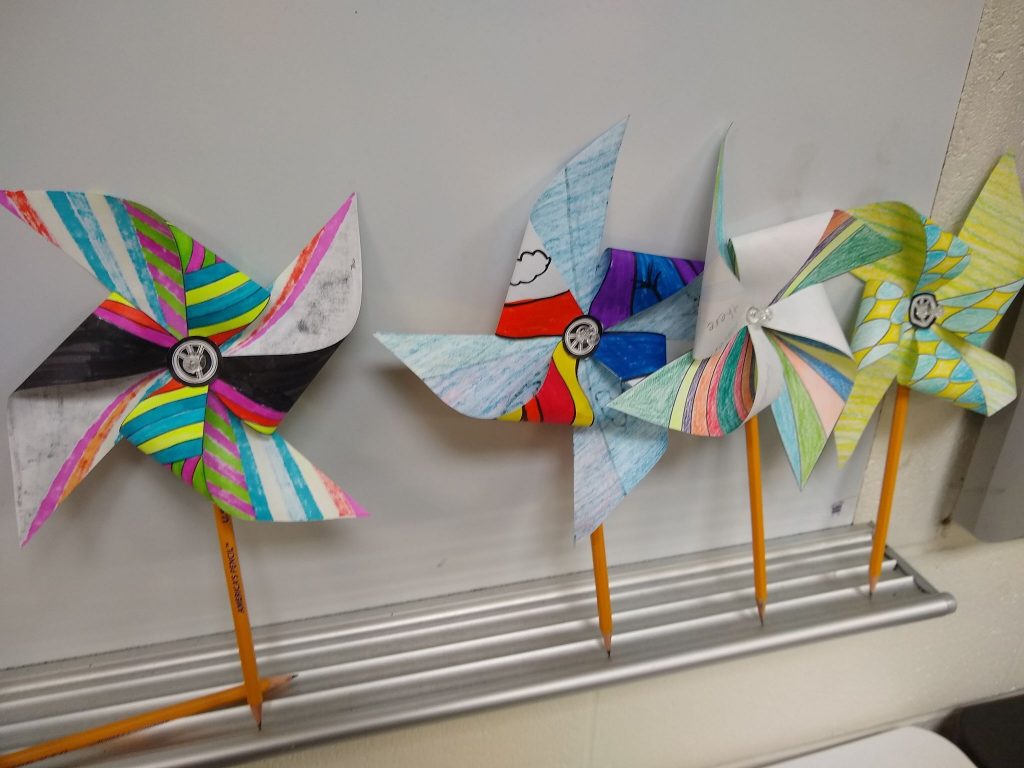
I printed out each student’s pinwheel design. To do this, I used the snipping tool to cut out each student’s pinwheel template. I pasted the pinwheel designs in a Microsoft Publisher file with the student’s name at the top of the file.
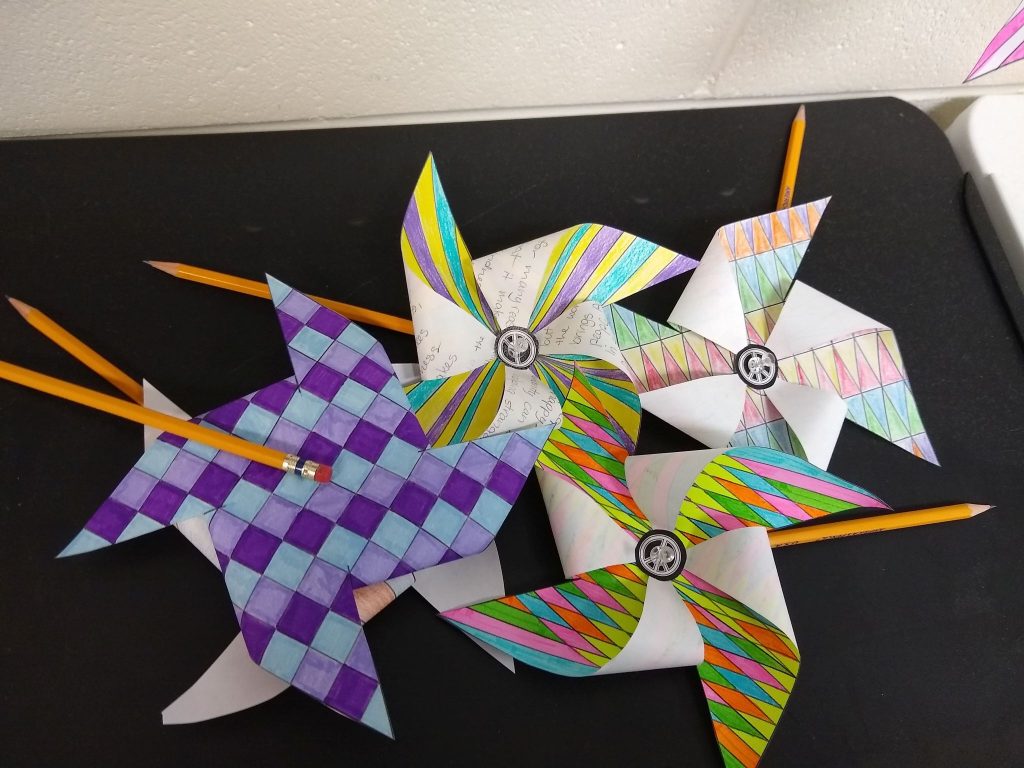
One thing I did have to be careful about when using the snipping tool was that the students hadn’t somehow changed the zoom level on Desmos to be non-square. If they have, it’s a simple fix of clicking “Zoom Square” in the Desmos settings menu.
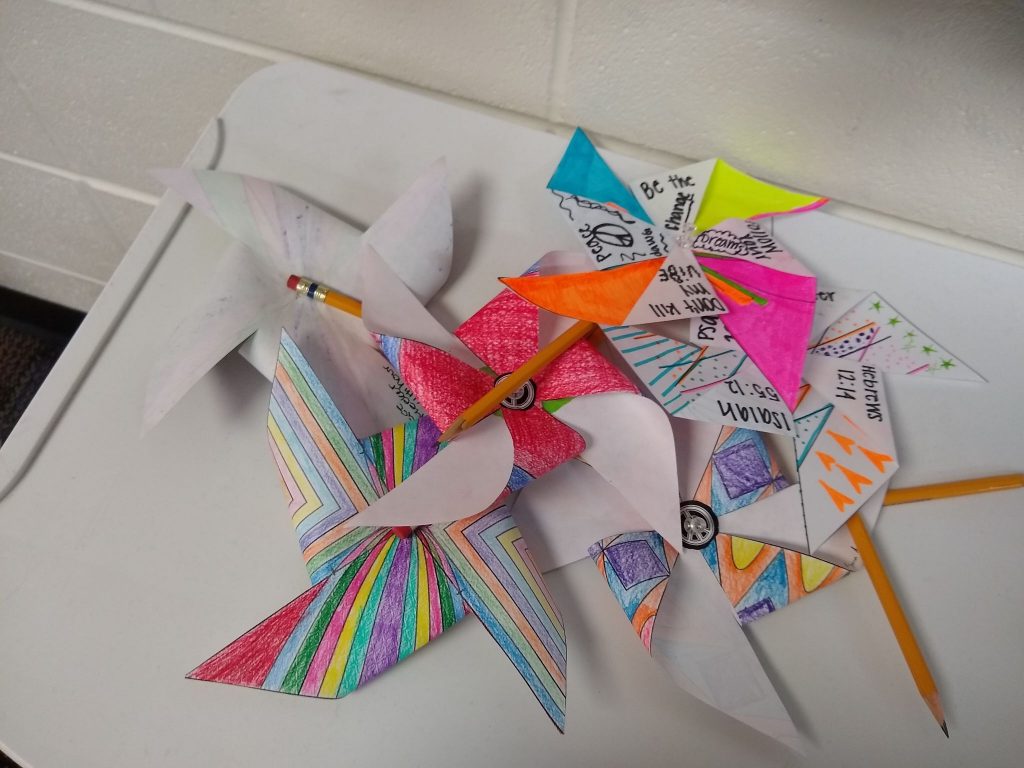
Then, students colored the resulting designs. Check out our awesome pinwheels that were all made with transformations in Desmos!
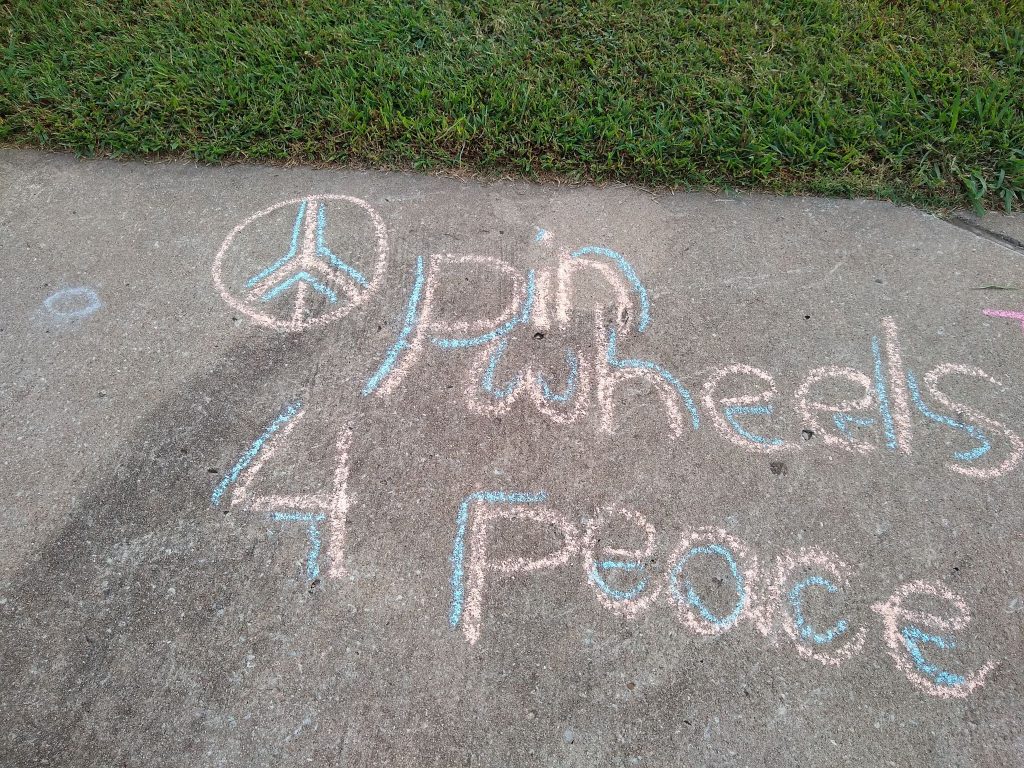
Some students chose to have their design face primarily forward. Others chose to have their design face primarily backwards. I think both effects are nice.
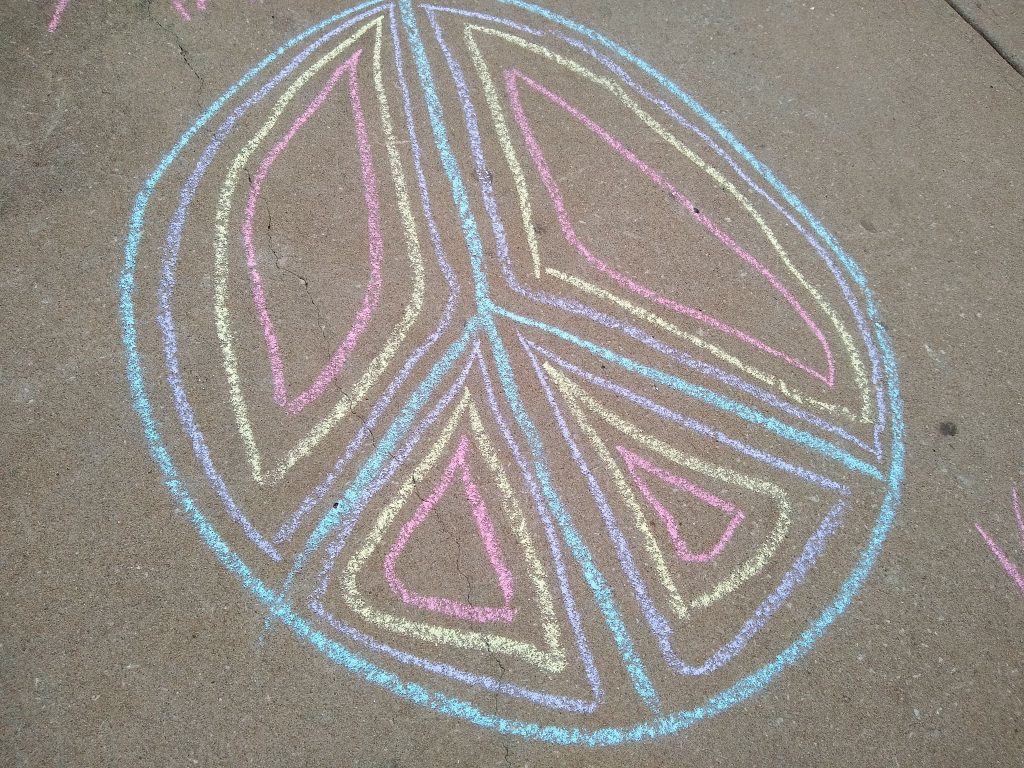
Soon, my classroom was taken over by piles of pinwheels EVERYWHERE.
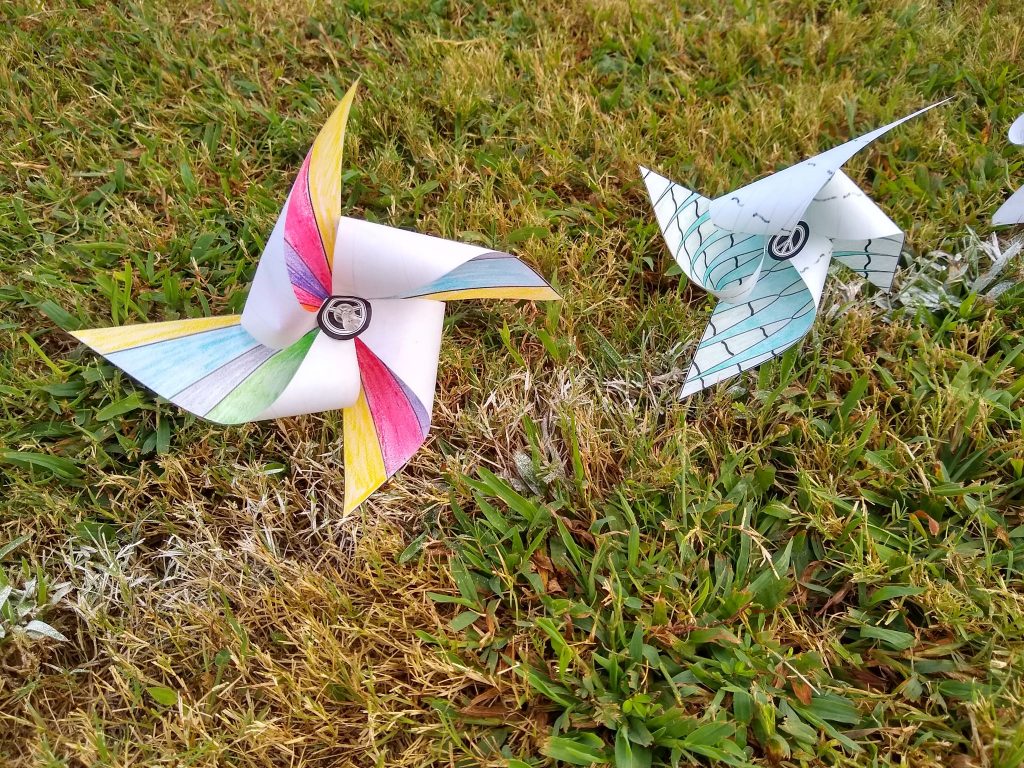
Advice: Definitely source some empty boxes or crates to give each class period a place to store their pinwheel.
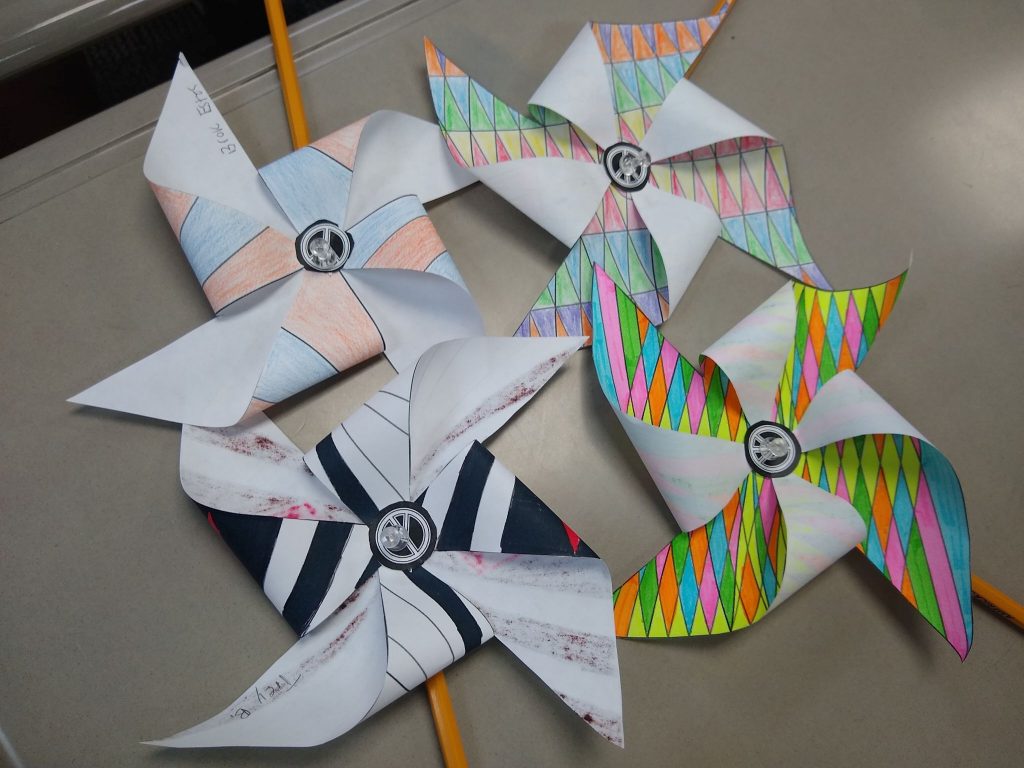
On Pinwheels for Peace Day, students take turns each hour walking to the front of the school and placing their pinwheels in the peace sign design. The peace sign design is drawn in spray paint on the grass beforehand so students know where to place their pinwheels. We also had some chalk art done to celebrate the day.
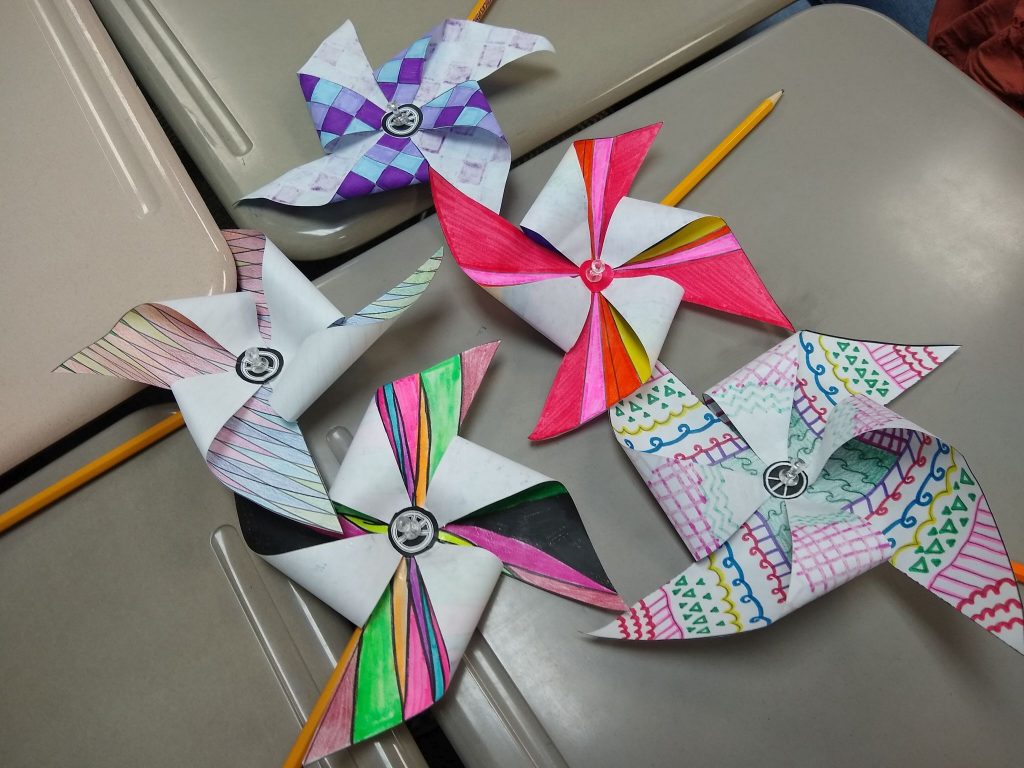
I love watching the peace sign grow as the day progresses.
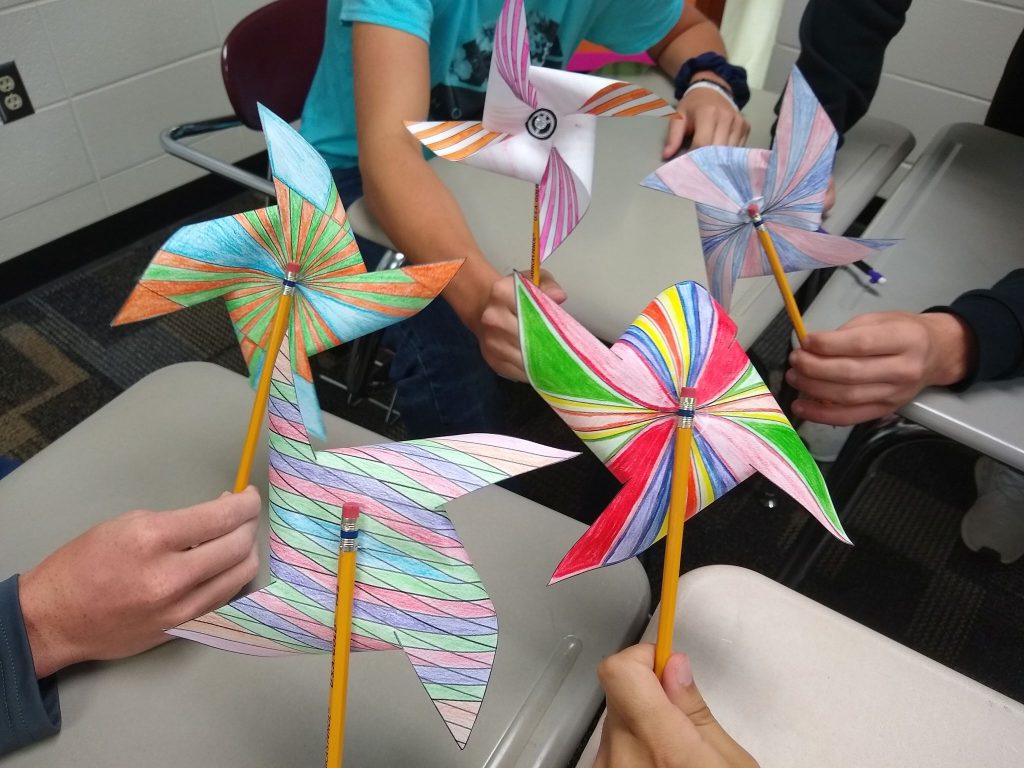
I did learn that smaller pinwheel templates are better than larger. The first year I did this project, I made the squares as large as I could. The pinwheels didn’t end up spinning in the grass because they hit the grass. In 2019, I made the square templates slightly smaller, and this seemed to work better.
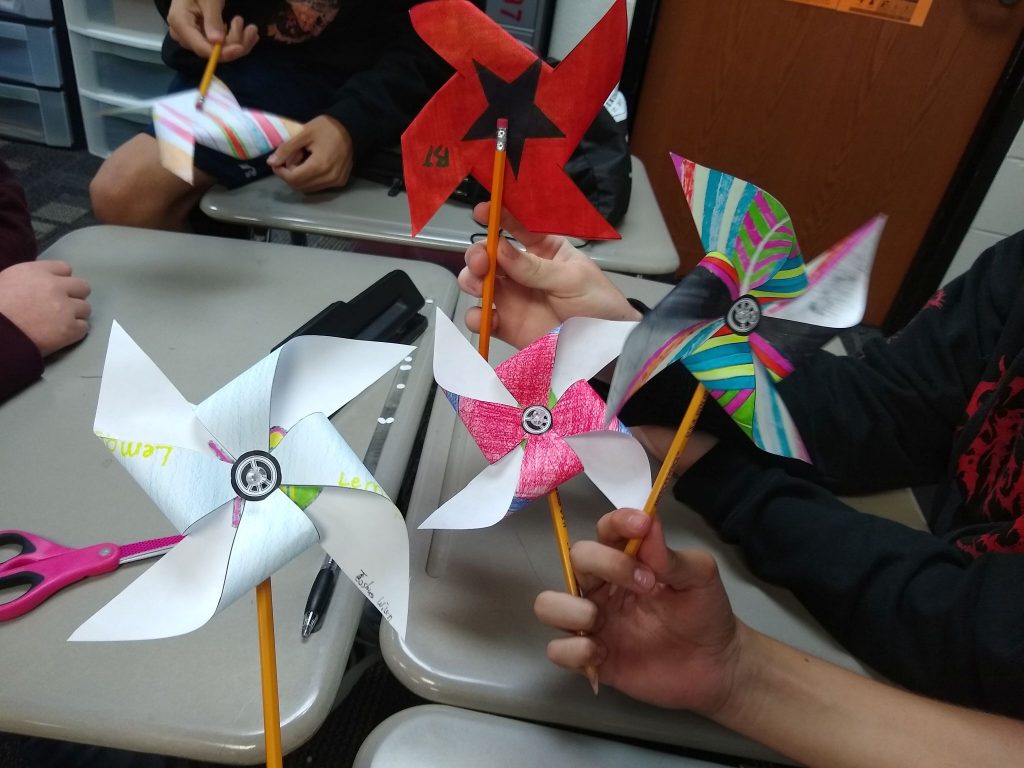
Sorry for the photo overload. I just love seeing all of these designs, especially knowing that they were created using mathematics!
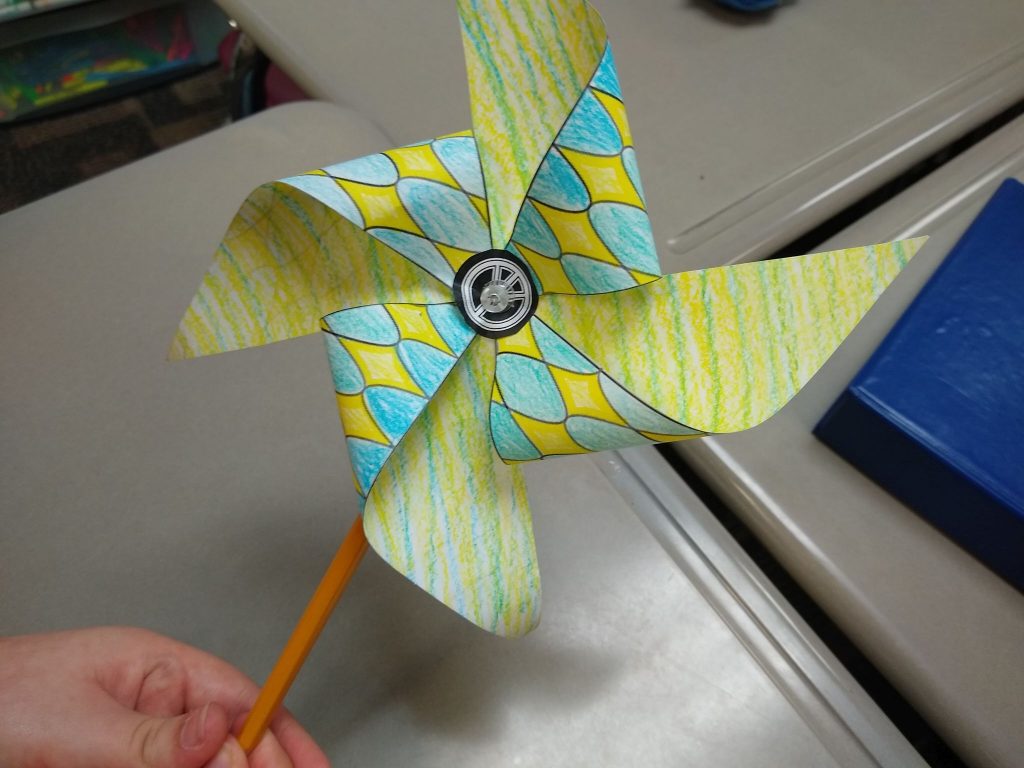
I usually try to pass out the printed pinwheel designs on a day where we have taken a quiz. I let students color their pinwheels after the quiz. If students need more time, they have to finish coloring their pinwheels at home.
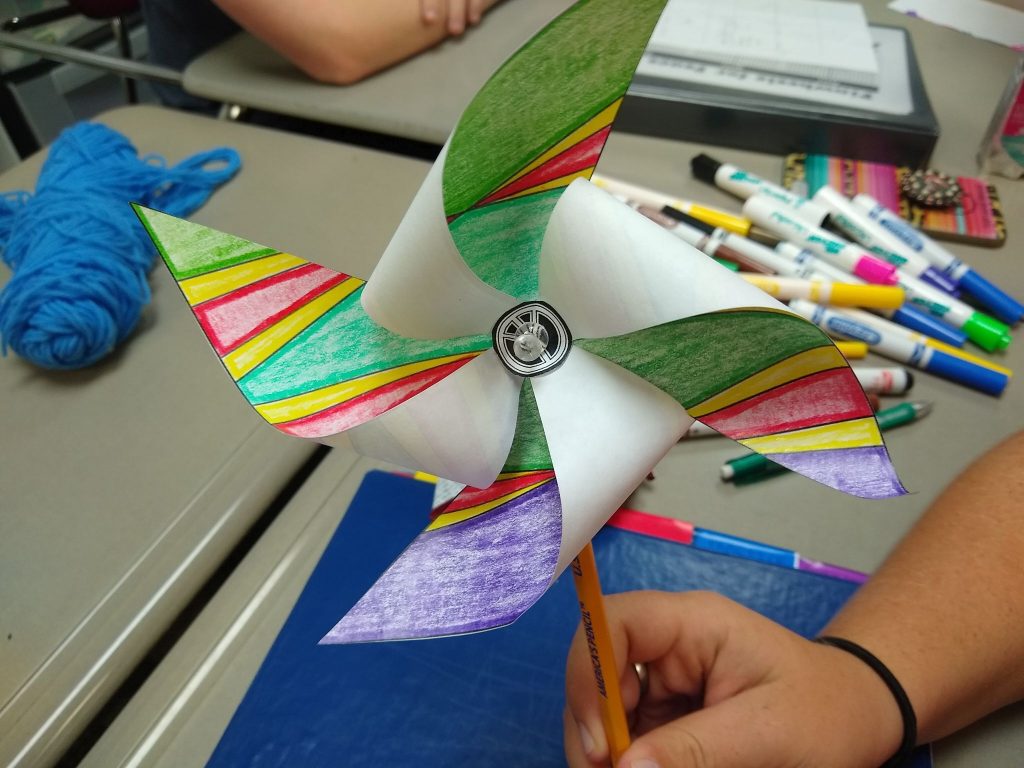
Then, I usually walk students through the pinwheel building process on the day before our Pinwheels for Peace Art Installation.
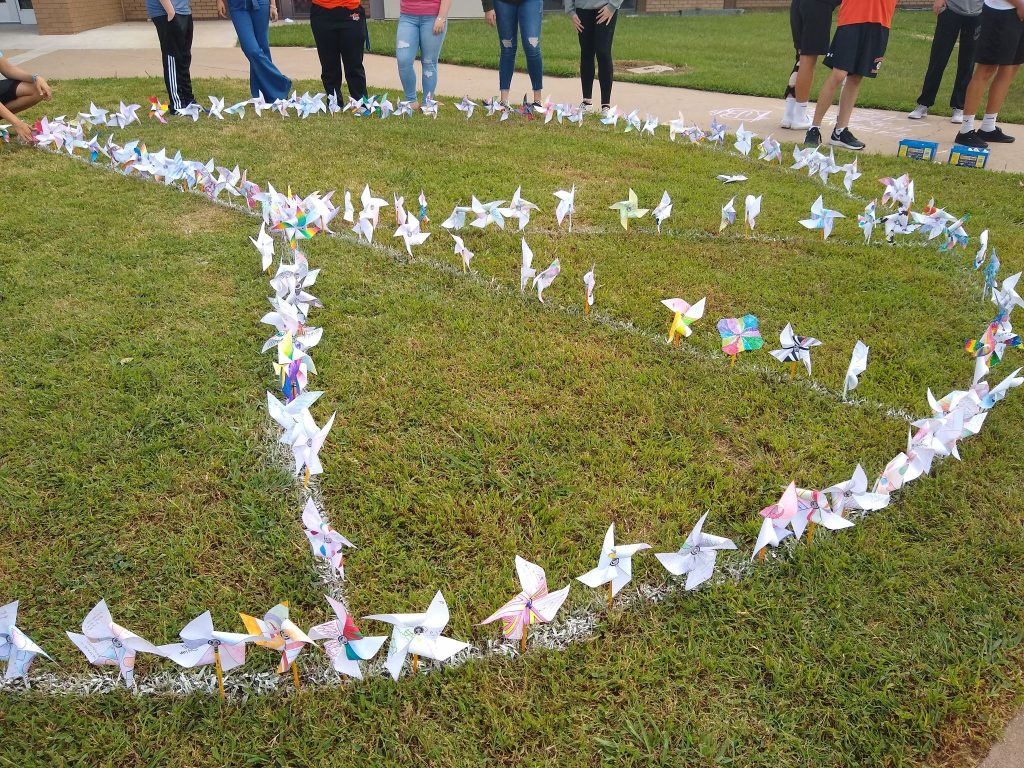
This means I only have a day or two of my classroom being completely taken over by pinwheels.
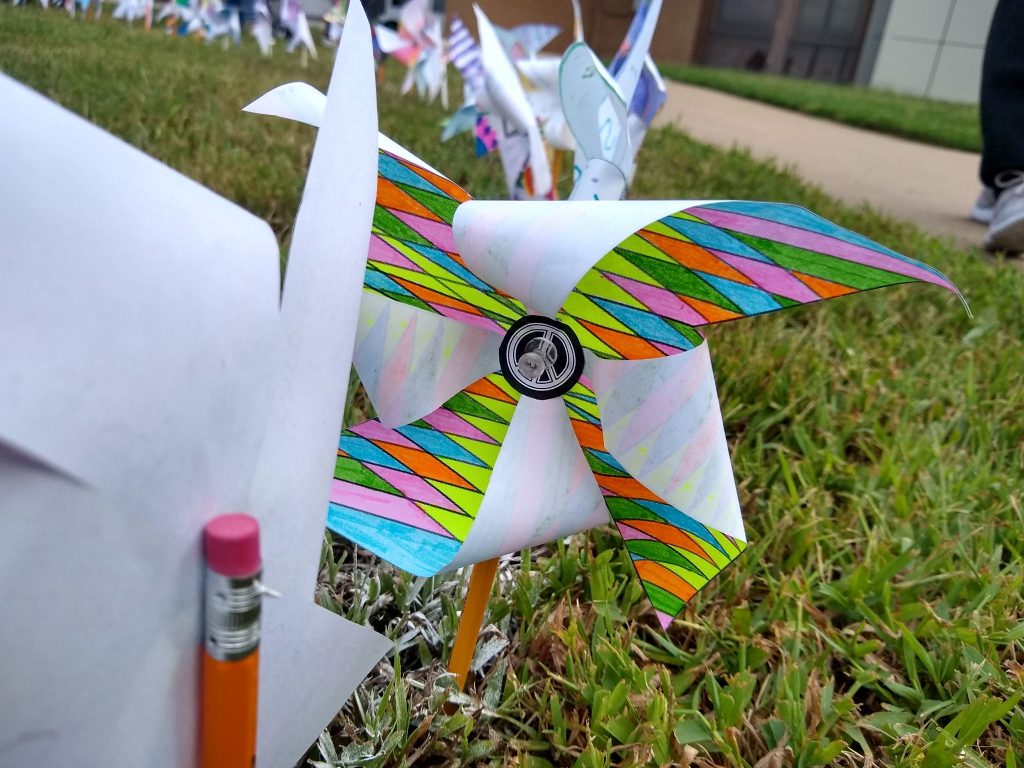
I highly recommend this activity. It is a memorable one for sure!
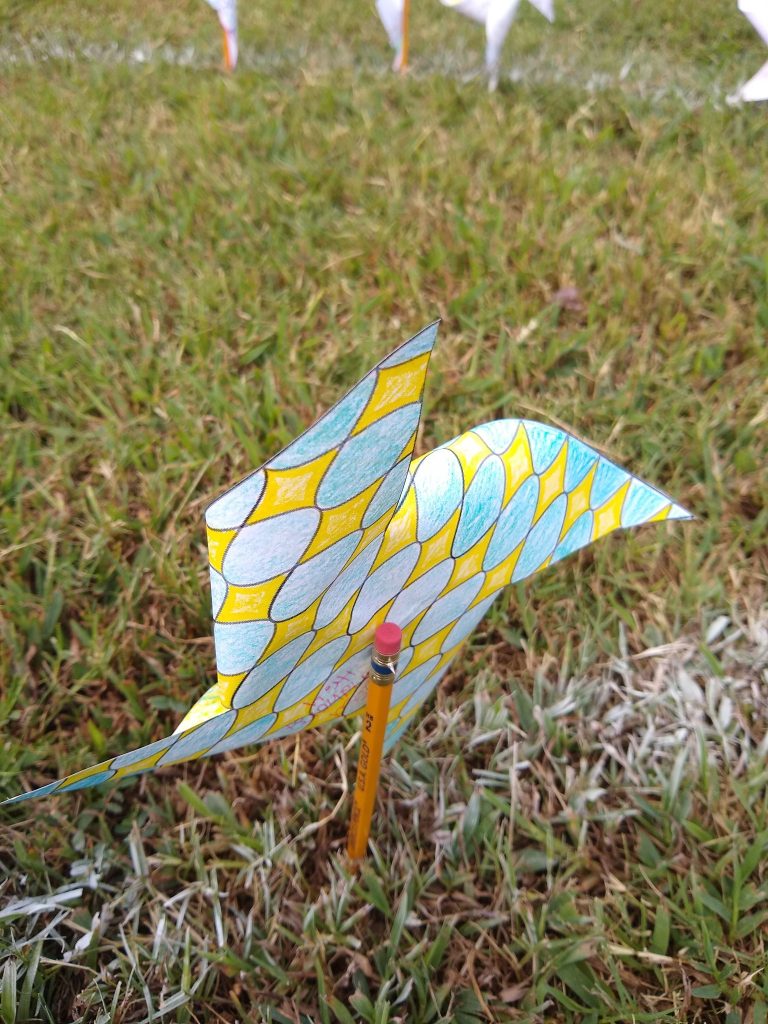
Thank you Desmos for making it super easy to have my students create their own mathematical art.
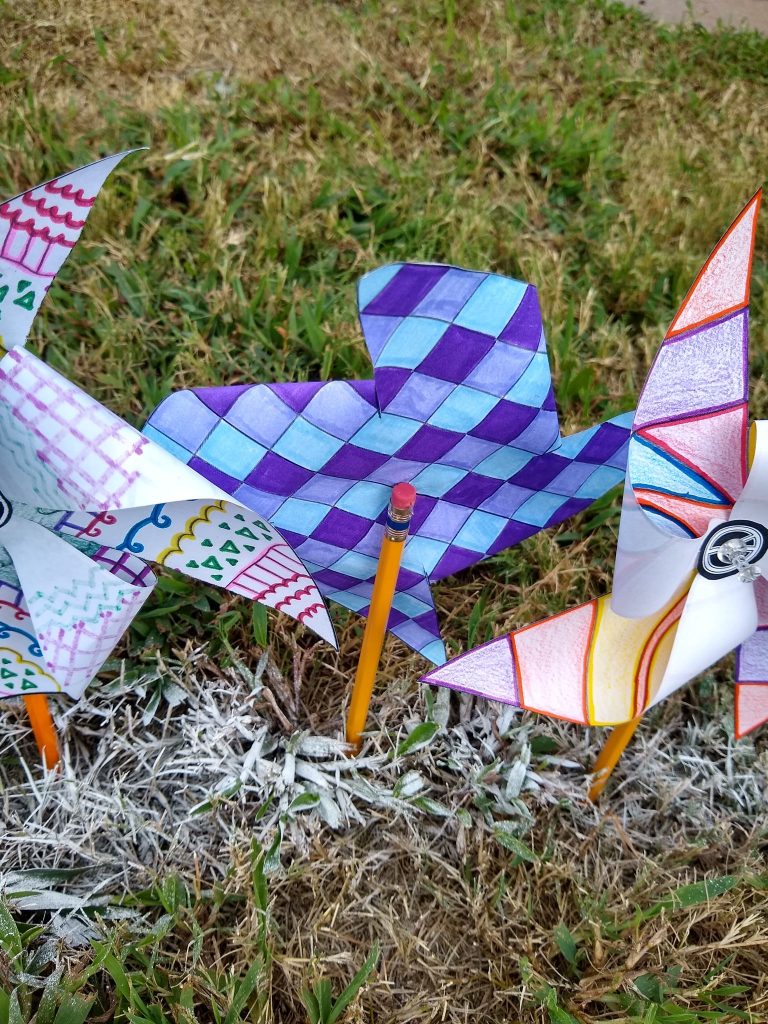
Does your school do any school-wide, cross-curricular projects? I’d love to hear about them!
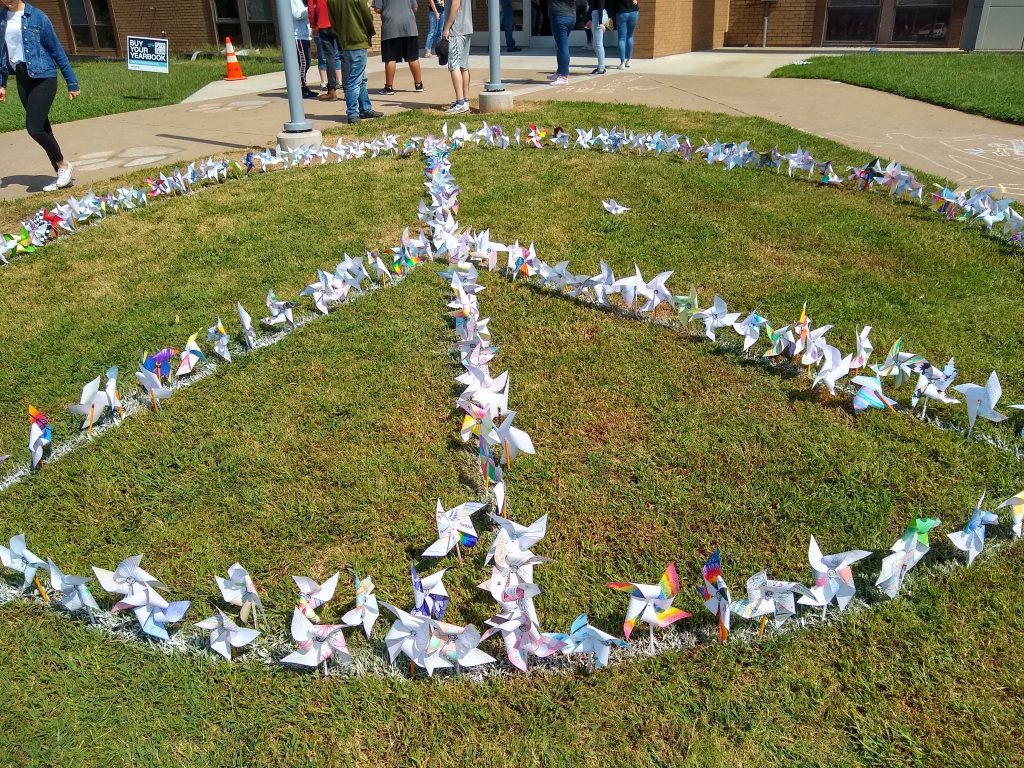
Pinwheels for Peace Files
Want to read more about Pinwheels for Peace? Check out my 2018 Pinwheels for Peace recap!

